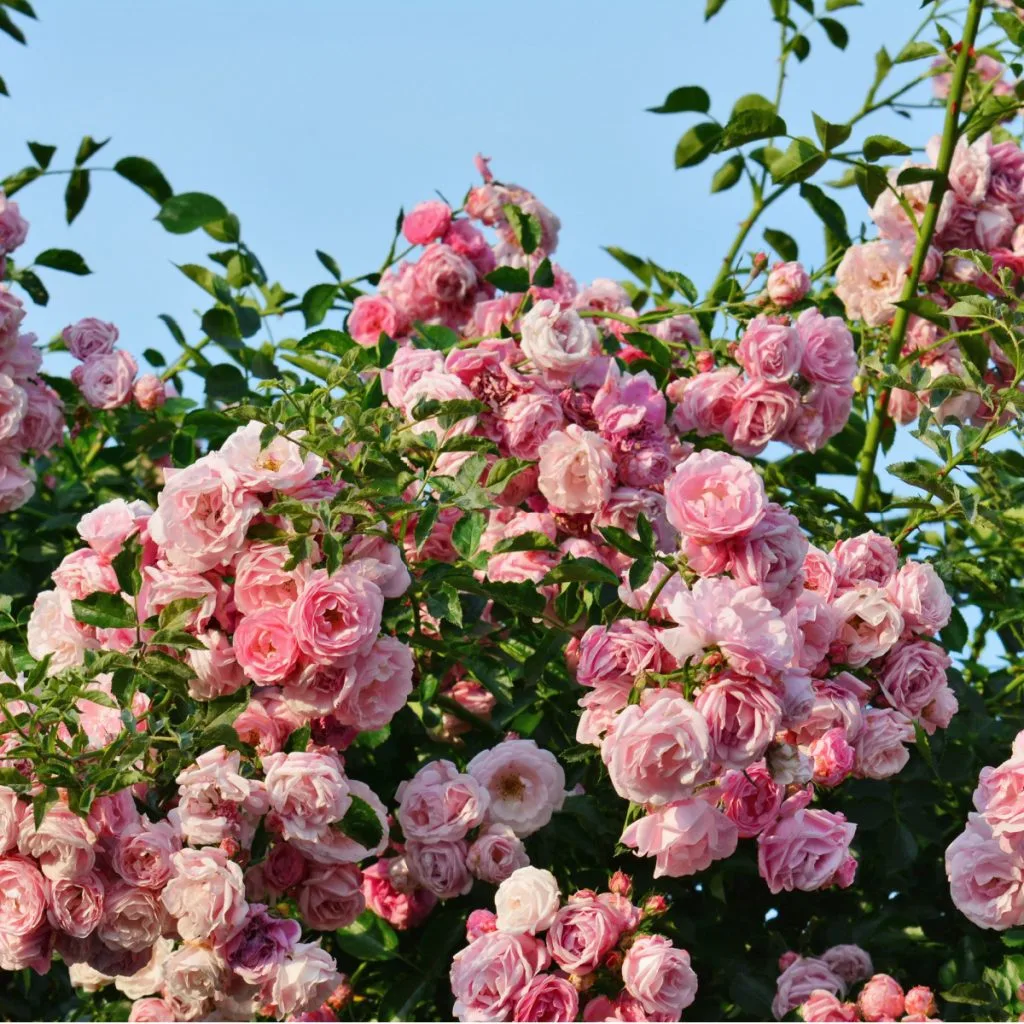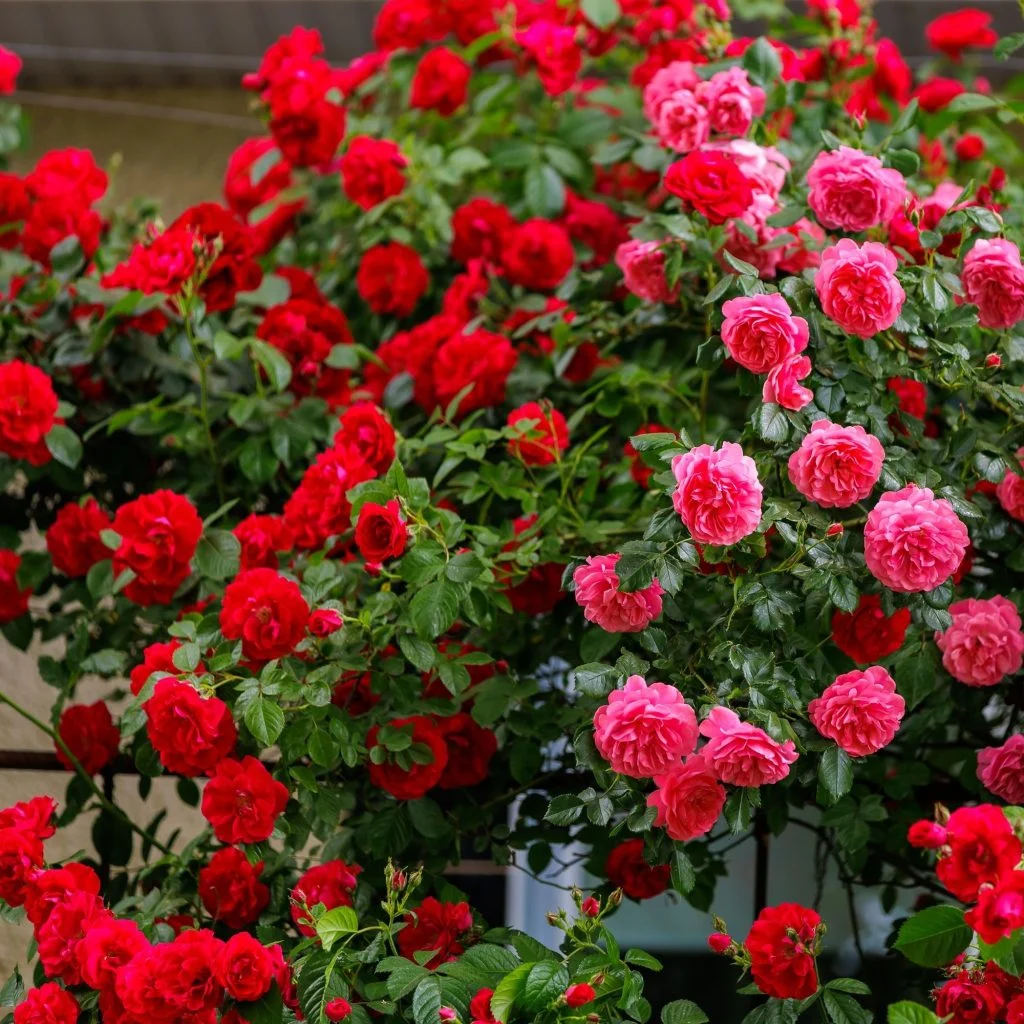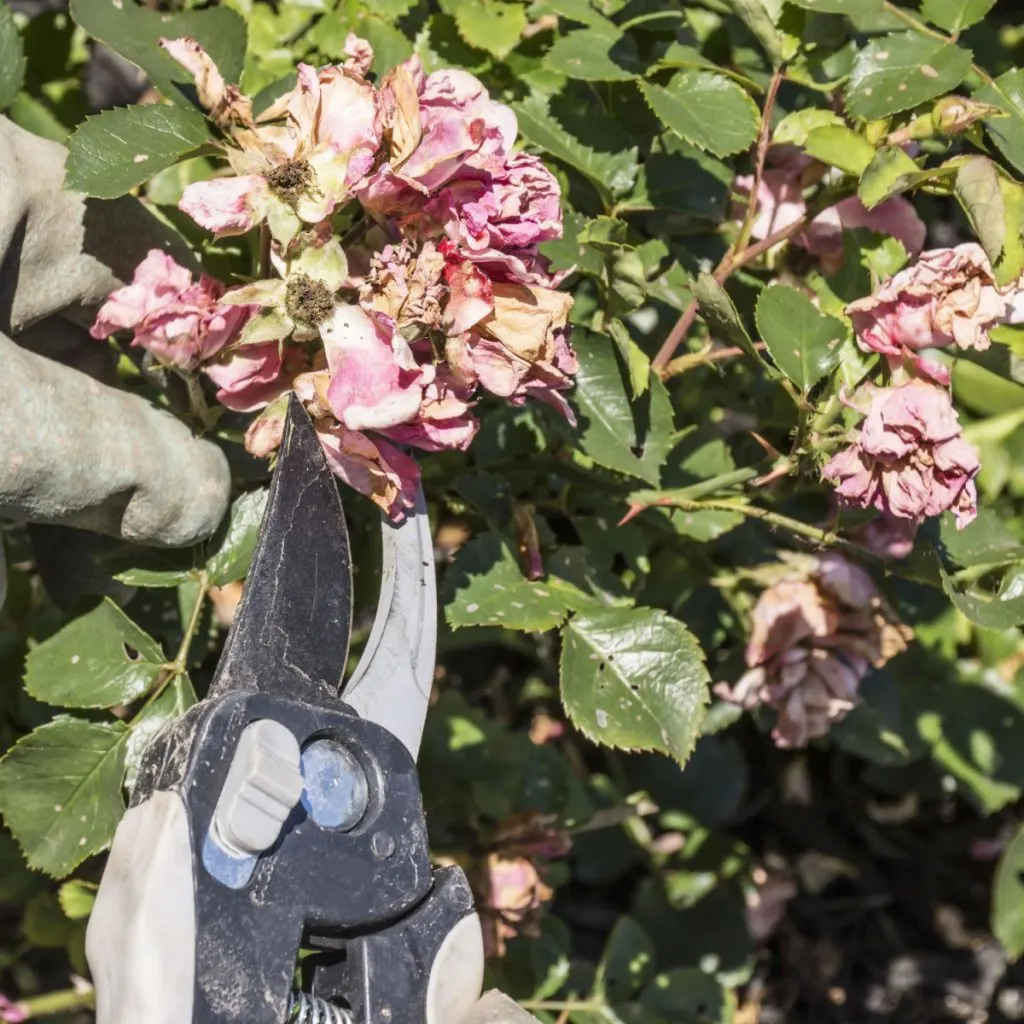Want to keep your climbing roses reblooming all summer long? Believe it or not – it’s easier than you think!
When it comes to climbing plants, it’s hard to beat the elegance of a climbing rose. That is especially true when it fills its foliage with a mass of colorful blooms. But for many gardeners, the biggest question on their mind is how to get those blooms to last as long as possible.
After all, even though the rose’s foliage might be attractive, it’s the blooms that are the star of the show. The good news is that with just three simple tips and tricks, you can all but ensure your climbers will be full of flowers again and again all summer long!

How To Keep Climbing Roses Reblooming Big
Unlike many traditional rose bush varieties, a climbing rose bush can repeat its bloom cycle several times throughout the growing season. Not only will they bloom on old growth, but new growth that has emerged during the season as well.
Although it will depend a bit on the variety you are growing, most climbers can bloom several times throughout a season. That is – if they are properly cared for. As it turns out, there are three very important tasks a gardener can perform to help keep roses flowering – fertilizing, deadheading, and pruning.
Fertilizing provides the nutrients your roses need most. Especially when you provide them at the right time. Meanwhile, deadheading and pruning both help to revitalize the plant, forcing it to bloom again and again.
One thing is for sure – if all three above are done properly, it can have your climbing rose bushes blooming over and over again from late spring right into late fall. With reblooming in mind – here’s a look at how to get each of those three little tasks done to perfection.
Fertilizing For Blooms
Blooming and reblooming requires energy for climbing roses. Not just a little, but a lot of it. Over time, perennial plants like climbing roses can deplete the soil where they grow of the nutrients they need most for blooming. And that is exactly where fertilizing can pick up the slack!

When it comes to powering any rose bush, the key to helping them bloom stronger is to supply the nutrients they need at just the right time. In the case of a climbing rose, that means just as they are heading into a new bloom cycle.
You can start in early spring, just as the first buds begin to form. When fertilizing roses, it’s best to use a fertilizer that is geared specifically to roses. This ensures they get the right set of nutrients needed for growth and blooming. Affiliate Link: Great Big Roses – Soil and Rose Fertilizer Booster to Grow The Best Roses and Flowers.
You also need to fertilize your climbing rose again each time during the season after a major bloom set ends and you deadhead the plant. The major deadheading will spur on a bloom set, and the fertilizer will help power it.
As a general rule of thumb, most climbing rose bushes will have a major bloom in late spring, followed by two to three more reblooming sets about every 4 to 6 weeks of the season if properly managed.
The Importance Of Deadheading
Just as with most perennial and annual flowers, removing spent blooms is vital to keep climbing roses blooming and reblooming. The longer a decaying flower remains on the plant, the more issues it will cause.
When an old bloom is left on a plant to decay, it continues to draw resources from the plant. Nearly all plants naturally try to fix or heal any living part that grows from their roots. The same goes for climbing rose bushes.
But by regularly deadheading or removing spent blooms, you can help the plant put its resources where they count the most. And that means using the energy for producing new growth and blooms.
To keep your climber blooming longer and stronger, take a bit of time every few days to snip off old blooms. The more you can clear from its branches, the more power it will have to use to create more. And don’t just toss those blooms into the trash, they happen to be a perfect addition to your compost pile!
Pruning Back In Mid Summer
In addition to deadheading, light pruning in season can also help conserve plant energy for better blooming. As you remove spent blooms, take time to cut back wild-growing shoots. Long runners and rogue growth branches consume a tremendous amount of the plant’s energy. Especially when you consider these types of off-shoots rarely produce many blooms.

It is far better to cut these back quickly to keep growth manageable. In addition, always remove any and all broken limbs or ones that show signs of disease or other damage. Just as with keeping old blooms on the plant, when any damage occurs to a plant, it will use available resources to attempt to heal the issue.
As for major pruning – that should always take place when the plant is dormant in late winter. For more on that, check out our article: How To Prune Rose Bushes – And Why To Do It In Late Winter.
A Few Extra Tips To Keep Climbing Roses Reblooming
There are a couple of other helpful tips for getting the most from your climbers. At season’s end, mulch your climbing rose with a healthy dose of compost before winter settles in.
The compost will not only help to act as a protective mulch, it will also slowly recharge the nutrients in the soil for the following spring. This, just as with fertilizing, can help power early growth and a faster set of blooms.
Using compost in the fall is the best way to give them power for next year. You should never fertilize your roses in mid to late fall. This type of power can spur on new growth that can then leave the plant vulnerable to winter damage.
In addition, take care to keep trailing branches secured to whatever support structure your rose is climbing. The more secure the branches and stems, the less likely damage will occur during inclement weather.
Here is to growing climbing roses – and to getting them to rebloom again and again through the summer months!

This Is My Garden
Follow Our Facebook Page For Great Gardening Tips And Advice! This Is My Garden Facebook Page
This Is My Garden is a garden website created by gardeners, for gardeners. Jim and Mary Competti have been writing gardening, DIY and recipe articles and books and speaking for over 15 years from their 46 acre Ohio farm. They publish three articles every week, 52 weeks a year. Sign up today to follow via email, or follow along!

